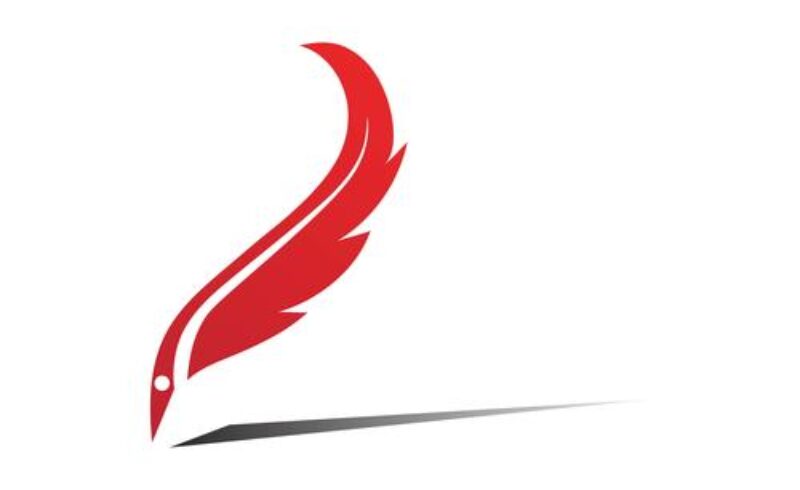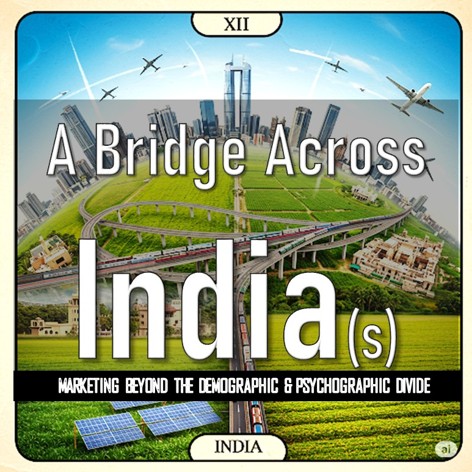War and Peace
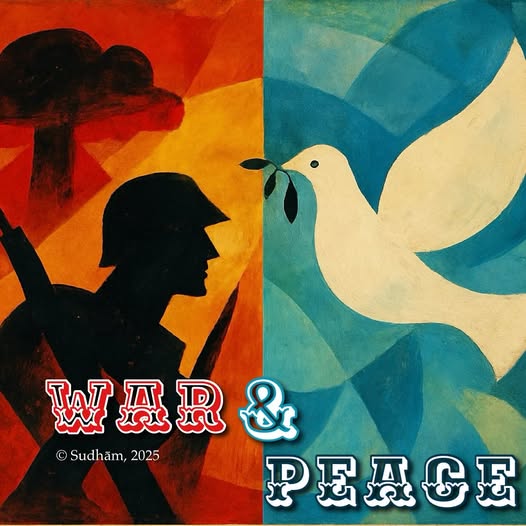
One swallow they say
does not a summer make
The battle’s over
but the war’s far from done
Fight to the finish
is what it’s going to take
The theatres now change
we’ve only just begun
The curtains shall continue
to rise and fall
Life’s not going to let up
nor retreat with tail between legs
To hit back hard or harder
is not choice it’s a judgement call
Victory is not sweet
till the vanquished for mercy begs
Keep your friends close
and your enemies closer
Trust is indeed hard to gain
and is easier lost
Halcyon days may be an illusion
when no agreement is kosher
Peace is a necessity
it most certainly has a costकल का सूरज (Kal ka Sooraj)
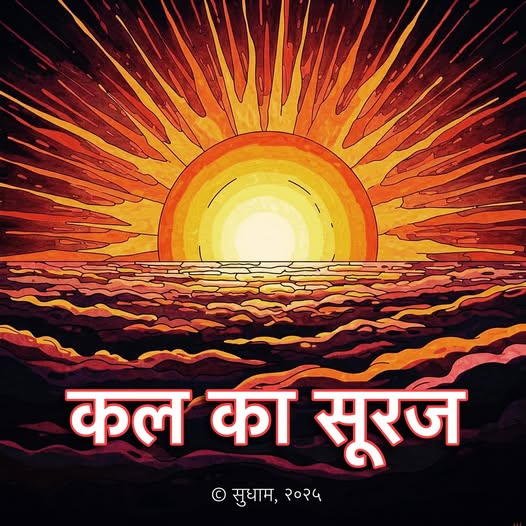
एक बात तो खिली धूप सी
उजली और साफ़ हो चली है
मेरी हस्ती बीते कल में ज़्यादा
और आने वाले में कम मिली है
मेरे कल और मेरे आज के सूरज में
मेरा हिस्सा कुछ माँगा कुछ अपने दम का होगा
जो उगने वाला है कल सूरज वो
अतीत का नम और भविष्य का तेज़ सूचक होगा
जो आज विशेषण मेरे लिए उपयुक्त हो रहे हैं
उनमें से कुछ मेरे पितृ तात के साथ भी जुड़े होंगे
परिवर्तन का एक नया अध्याय लिखा जा रहा है
इस भाग की नायिका और पात्र सब नए होंगे
हर पल समय अवश्य बदलता रहता है लेकिन
दिन रैन और ऋतु चिरकाल और निरंतर हैं
यूँ देखो तो ढलते और उगते सूरज के बीच
बस एक रात और एक दृष्टिकोण का अंतर हैA Bridge Across India(s)
Marketing beyond the Demographic and Psychographic Divide
Context:
I recently read three articles in one of the newspapers. One that spoke about the income disparity that exists in India and if I may add, one that is widening. Combined with another article they tried to make sense of the income classes in India. A third article a few days later, gave data pertaining to education and economic affluence. Leaving the socialist aspects aside, the averages as usual by themselves are misleading and deceptive.
Exhibit A:
According to a statistic (source or basis not explicitly mentioned by the report) an income of Rs2.9Lakhs per annum puts one into the Top 10% earners and to enter the Top 1% an income of Rs.20.7Lakhs per annum shall suffice. However, to get into the Top 0.1% you need an annual income of Rs.2.25Crores. The comparable numbers in terms of accumulated wealth or net assets for these brackets are Rs.21Lakhs and Rs.82Lakhs for the Top 10% and Top 1% respectively.
Exhibit B:
The associated article in the same newspaper quoted data from 2 reports namely the Indus Valley Report 2025 and the Knight Frank Wealth Report 2025. The Indus Valley Report proposes the concept of 3 Indias based on income categories
- India 1 – Representing the wealthiest 10% of the population who have a per capita income of USD15000 (Rs12.8Lakhs) comprising of approximately 30MN households
- India 2 – 23% of population with per capita income of USD3000 (Rs.2.5Lakhs); ~70MN households
- India 3 – 67% of population with per capita income of USD1000 (Rs.85Thousand); ~200MN households
Exhibit C:
The third article looked at the social caste construct and how it impacted education levels. Education it opined and I agree is perhaps the biggest factor in inter-generational upward mobility. The article also referred to data gathered by the NSSO.
Premise:
Looking at these numbers set the marketer in me thinking about what lies beyond these income/wealth numbers and how we as a tribe use the demographic data for creating/defining our target audiences. The thought then led to a further reading and assimilation of data from a wider range of articles and reports.
What also found its way into my thinking were my recent experiences with studying Consumer Archetypes and my interactions with a vast set of consumers trying to understand their aspirations and motivations.
While by no means exhaustive or even pretending to be scholarly my notes as I made them threw up a pattern that potentially can serve as a de facto framework for marketing to Indian consumers based on 3 broad dimensions:
- Geographic
- Economic and
- Psychographic
A combination of these dimensions help us understand the 4As namely Availability, Affordability, Accessibility and Acceptability of Products and Services that we marketers aim to influence and promote.
Marketing is essential for raising awareness, building trust, and encouraging the use of services and products.
From the point of view of the Geographic Divide i.e. Urban and Rural, inclusive marketing involves more than just targeting rural audiences—it requires a thoughtful understanding of their distinct challenges and cultural backgrounds to create meaningful connections and promote the adoption.
Nielsen reports provide important insights into overall consumer trends, spending patterns, and the key role affordability plays in shaping consumer behavior across different groups. With much of India’s economic activity and spending power concentrated in urban areas, a targeted approach is essential to effectively understand and engage rural markets through customized marketing strategies.
- Rural consumers are generally more price-sensitive and favor local brands that meet their needs and budget.
- Urban consumers are more brand-conscious and are influenced by national/international brands and media trends.
- Rural families are often larger, with centralized decision-making by one person.
- Urban families are usually smaller and nuclear, with shared decision-making between male and female members.
On the Economic dimension, the narrowing of the consumption – expenditure gap between urban and rural areas, coupled with the increasing inclination towards non-food items in rural spending, signifies an expanding market with evolving needs and preferences. Marketers who recognize this burgeoning potential and tailor their offerings to meet these specific demands are poised for success.
Fueled by rising income levels and various government support initiatives, the purchasing power of rural consumers is on an upward trajectory.
Growing access whether in terms of transport infrastructure paving access to higher order necessities such as health, education or to information and awareness courtesy the digital access that the penetration of mobile phones and internet have meant higher aspirations.
Believe it or not the axis, however low it might have been has considerably shifted up and right over the last 2 decades. Therefore, understanding the Psychographic aspect of the change is an imperative. Unfortunately, as old school as I may sound, data alone cannot get marketers across the line.
There is no substitute to first hand exposure to the consumer. A marketer worth her salt cannot, dare I say should not compromise on living a day in the life of the consumer(s) they aspire to market to. Multiple times over, if need be.
Bridging the demographic and the psychographic divide in India necessitates a strategic and sustained commitment to understanding and effectively serving the unique needs of different archetypal consumer profiles that emerge based on the dimensions and factors outlined.
Archetypes
Debatable as they may (and intentionally so) the broad archetypes that emerged according to my notes are as below:
The Rulers
The prime movers and shakers if not already who-is-who these are folks who are heading there or at the very least striving to. They are setting trends and shaping narratives – social, political and economic as they go along. The Rulers are the HAVES.
The Controllers
They are the country cousins of the archetype just above. They have POWER and do not hesitate to wield it. They are always in-step or at worst one behind with what is current and trending. Social superiority is essential. The Controllers are the MUST HAVES.
The Aspirers
Their trajectory is pointing upwards and their ambitions are keeping it there. They have SKILL and KNOWLEDGE to get where they want to. They are the difference between a fad and trend! They are the WANTS.
The Dreamers
They are doing well for themselves though things could always be better. The dreamers are happy with the fact that it is possible for them to be better. However, ambition takes back seat for sentimental reasons or contentment or pragmatism. They are the COULD BES’.
The Warriors
They are inching towards a better life for themselves. Every day is a battle they fight and WIN. Bruised and battered they may be but they wear their battle scars with pride. Making ends meet is not the goal it is something they have to do to get to it. The Warriors are a tribe that is armed with a can do spirit but they are the MUST DOS’.
The Survivors
They have limitations, severe ones. The absence of privilege of any sort is what defines them. Yes, they depend on others but that is just the cards they have been dealt. There is a desire to change their future and rid themselves of the baggage of the past (socio-economic). They are the NEEDS.
3×2 India Framework
This proposal based on a top-level analysis of consumer psychographics and consumption patterns unveils distinct differences between urban and rural populations across the economic divide. The image that follows tries to give context to the archetypes on 2 axes based on Geographic and Financial. This placement of consumer types in context underlines the need for tailored marketing strategies across the archetypes.
Key strategies for success include prioritizing localized product offerings and pricing, building robust distribution networks that penetrate remote areas, utilizing local languages and culturally relevant messaging, and fostering trust through transparency and community engagement.
Conclusion
The increasing reach of digital platforms presents significant opportunities, but addressing the challenges of connectivity and digital literacy requires a hybrid approach that integrates digital outreach with strong community-based initiatives.
There are some useful and celebrated case studies in the form of Project Shakti and e-Choupal that demonstrate that a deep understanding of the local context and a willingness to adapt strategies are fundamental to achieving meaningful impact in rural India. However, these need to be perhaps revisited through the lens of economic disparities too.
Ultimately, bridging the divide requires a long-term commitment from businesses in general and more specifically marketers along with other stakeholders to create a more inclusive and holistic marketing construct that speaks to all consumer types.
Ready?!
पहलगाम (Pahalgam)
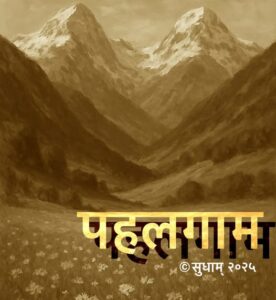
एक लम्हा ही काफ़ी है
जन्नत को दोज़ख़ बनाने के लिए
इंसानियत को मरना पड़ता है
इंसान को मारने के लिए
हद और सरहद दोनों बेमानी हैं
नफ़रत को घर करने के लिए
असली कातिल तो ये सियासत है
बेगुनाह क़ुर्बान किए जाते हैं जिसके लिए
क्या ज़िंदगी का मिटाना ज़रूरी है
नुक्ता-ए-नज़र को आगे रखने के लिए
क्या इतनी हैवानियत लाज़िम है
किसी भी ख़ुदा की बंदगी के लिए
अरसों के बाद मुश्किल से गुल खिले हैं
मरहम से लगने लगे थे ज़ख़्मों के लिए
जाने कितने और फ़ासले अब भी हैं
बर-रू-ए-ज़मीं फ़िरदौस के लिएGoing DIGITAL / Talking GREEN ?
Are you as a brand or business or communicator doing the same? Well here’s a thought. Going digital alone may not be as green as you think or have been led to believe it is.
Do not get me wrong, marketing work-flow automation, digitization, etc. are a step in the right direction. However, their “greenness” may be getting over-stated when it comes to a marketing context and conscience. Marketers across organisations tend to add the green tag to all or any such initiative that they take without a holistic understanding of the carbon cost of such an exercise.
This overtly simplified rationale of digital = no paper = green may be where most marketers stake claim to green. This conventional wisdom approach was good enough two or may be three decades ago when “paperless office” was a buzz word.
RIGHT NOW is the time for the marketing tribe to step its game up and make green tangible.
I have seen EV cab operators give CO2 or Trees equivalent in their apps to make consumers aware of the impact of their choice(s). Utility companies moved from paper bills to e-mails. Many of the solar rooftop installation players too are using this ploy. The question though is, how much of it does a consumer really comprehend?
Yes paper bill to email was a timely step but who is making you aware of the green cost of the email? There is a green cost every time we search, browse, scroll, play or transact digitally.
The heart of the digital world lies in data centers. These facilities, housing servers that store, process, and disseminate data, are massive consumers of electricity. Firstly, they power the servers themselves, and secondly, they require extensive cooling systems to prevent overheating. Estimates vary, but studies suggest data centers collectively consume approximate 340TWh or 1-2% of global electricity.
A single data center often can consume the equivalent electricity of 50,000 homes.
Here are some assorted data points intended as food for thought:
Email: A single, simple text email has a small footprint (estimated around 4g CO2e), emails with large attachments can increase this significantly (up to 50g CO2e or more). The sheer volume – estimated at over 347 billion emails sent daily in 2023 (Statista, 2023) – means the cumulative impact is substantial. Furthermore, “spam” emails, which constitute a large percentage of traffic, represent wasted energy for processing and storage.
Digital Transactions: Financial transactions, online banking, and cryptocurrency mining require processing power and network usage. While a digital transaction is often more energy-efficient than a physical bank visit, the scale is immense. Cryptocurrency mining, in particular, is notoriously energy-intensive, with Bitcoin’s network alone consuming energy comparable to entire countries.
Social Media & Streaming: These platforms are particularly data-heavy. Streaming video accounts for a vast portion of internet traffic – estimates often place it around 60-80% of total downstream volume (Sandvine Global Internet Phenomena Report). High-resolution video streaming, scrolling through image-laden social media feeds (like Instagram, TikTok, Facebook), and video conferencing all require constant data transfer and processing, demanding significant energy from data centers and network infrastructure.
According to Meta’s own report on sustainability the net emissions were CO2 equivalent 7.5 million tons in 2023.
Aside to compliance led, mandatory or responsible reporting by global majors, the brands of today going forward need to help their consumers make informed choices in the context of today. This means making green-speak colloquial. Making impact relatable, tangible and in classic marketing sense rewarding.
Whether consumption patterns actually change if people were indeed made aware of the green cost of watching a season, placing an order on the internet, time spent on social media is debatable but given the dire state of our planet surely worth an effort.
As marketers, we can surely be conscientious about the next reel we create for our brand or the next e-mail that get’s triggered or notification we serve for a cart action.
Ready?
Brand Supernovas (2025)

How many times have brands or companies simply be-dazzled you with their products, communication, pace of innovation, service delivery etc. and then suddenly dropped off the planet?
Not often, but I bet most of us would come up with an example or two.
Got thinking on similar lines and tried racking my brains to come up with a list my own. Funny thing with lists though is that you want the number of items on it to reach a nice round figure. What I figured was; whatever number that you can get to without stretching the core thought is probably the right number to have on the list. I am sure you nodded your head to that one.
Before I started writing this post I looked up the term “Supernova” in the dictionary
su·per·no·va (so͞o′pər-nō′və)
A rare celestial phenomenon involving the explosion of a star and resulting in an extremely bright, short-lived object that emits vast amounts of energy. Depending on the type of supernova, the explosion may completely destroy the star, or the stellar core may survive to become a neutron star.
I have for the purpose of this post highlighted what I believe are the operative parts.
Before I go on to cite examples let me establish the basic premise which is, a successful brand is the coming together of a great product or service and communication that resonates with the consumer leading to a distinctive identity, a marked preference and a position of leadership. Now, that’s an elevator pitch definition of brand success that covers most if not all bases.
Now brands fade for a variety of reasons and hundreds go into oblivion every day. Mostly because they didn’t deliver on the promise that they made. Reasons could be they stopped being relevant or they got complacent or they were poorly managed etc. The very opposite at one time or the other must have got them to the top. It is however important to make a distinction between brand supernovas and brand fads.
Brand supernovas are the ones that seemed to have got it right. Well at least for a while.
Now for the examples. Here are brands that shot up high and lit up the horizon while they were at it. Almost all these brands had a great product/service idea that went down extremely well with consumers, customers and investors. Not all of them spent big bucks on advertising and communication but they sure captured more than a fair share of imagination – to the extent that nobody imagined them going bust or fading away into oblivion.
- Fitbit – a pioneer in the wearables/fitness tracking space that rose to a dominant 37% market share and over USD10BN in market cap after going public in 2015. The heady success though didn’t last as Fitbit failed to sustain it’s first mover advantage. Wearables as a category saw a significant shift with brands like Apple upping their game. Fitbit’s revenue started to decline after 2016, and their market share also decreased considerably. Despite an initial high valuation, their brand value also saw a downward trend, eventually leading to their acquisition by Google in 2021. Google too sunset the brand soon after.
- PepperTap – Launched in 2014, India’s early attempt at quick commerce premised on a hyper-local /aggregation/commission based delivery model chalked up millions of subscribers and users as also millions of dollars in initial funding. To its credit, PepperTap had a fantastically simple and seamless user experience and some good algorithms to get the logistics right. However, a combination (arguably) of a misplaced sense of urgency wrt to expansion and heavy discounting saw the brand/company falter and lose its way. The fame and the glory were short-lived. By April 2016 PepperTap management had to announce a shut-down of it’s consumer facing operations. Subsequent attempts at revival in a B2B avatar too failed.
- Koo – Touted as India’s multi-lingual answer to X (erstwhile Twitter) this was a brand that lived only long enough to disappoint. The reason I mention Koo is that it reached a whopping 60MN users at it’s peak – no small achievement. Birthed at a time when India’s Nationalist sentiment was at it’s peak and perhaps helped along by an over-enthusiastic media response Koo did have something novel to offer to its users initially.
There of course are several other brands in the past decade that began their journey and met with great success. Some continue to grow, expand and flourish whilst some have run into some rough weather.
Some of the brands that spring to mind are Snapdeal, Groupon, Yumist which burnt bright for a brief while. Yet others such as Byju’s and WeWork on which the jury is still out.
They Do It With Mirrors
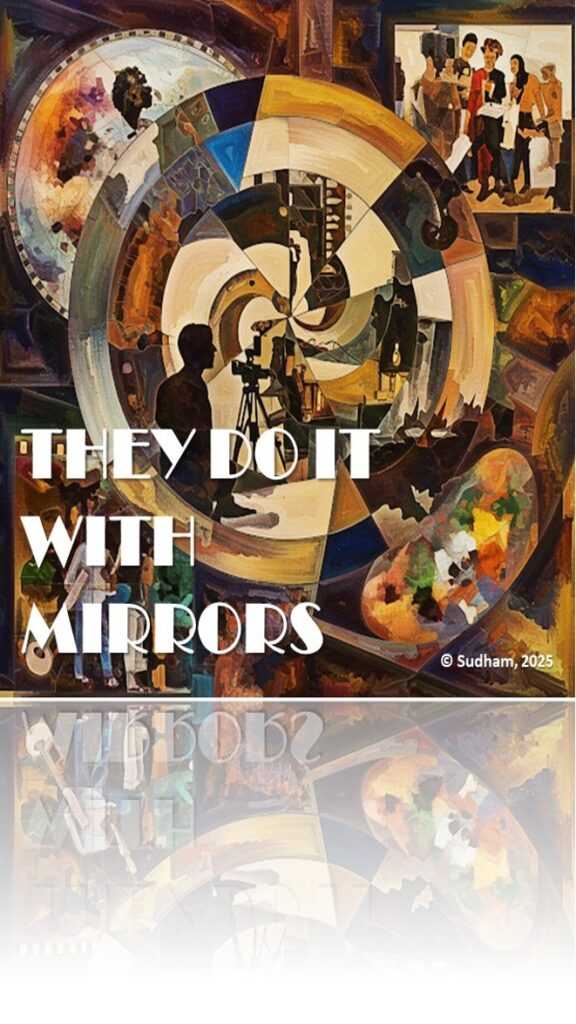
Enough has been said and written about the fact that we live in a hyper-connected world. The “Sociosphere” is constantly buzzing with activity- some frivolous, some thought-provoking and some meaningless stuff. Simply put, it demonstrates and proves what has been said all along. “It takes all kinds to make the world!”
People have always had opinions and they always have wanted to voice them. Today more than ever before there are platforms that provide all of us means to air these thoughts, as, how, when and where we as individuals deem fit. Probably, also the most commonly held perception of what the Right to Freedom of Expression is.
It may be pertinent refer to some known to be liberal constitutions v.i.z. USA, France and home turf India. All of them guarantee freedom of speech/expression as a fundamental right. However, through the First Amendment to the Constitution of the United States or even by the First Amendment to the Constitution of India (1951- within 15 months of India declaring itself a Republic) this constitutional guarantee was brought within what are popularly termed “reasonable restrictions” that could be placed by the State through other laws. Even the French Declaration of Rights of Man and of the Citizen ab initio through its Article 4 prefaces the other articles. I quote it only to illustrate how simple and pure the spirit of these so called reasonable restrictions are or ought to be.
“Liberty consists in being able to do anything that does not harm others: thus, the exercise of the natural rights of every man has no bounds other than those that ensure to the other members of society the enjoyment of these same rights. These bounds may be determined only by Law.”
Does this mean that we need to have a measure of exactly how thick skinned or thin skinned people around us (aka society) are? Moreover, is the State the authority to determine the same?
There are many determinants I would argue, all of them pertaining to time, place and context. Simply put who is in control/has authority on one hand and on the other, one who wants to question it or at least question the extent of it if not rebel against it.
Often this rebellion or questioning of the so called authority finds its way into art. Contemporary art often engages directly with the complexities and urgencies of the current world, responding to personal, social, or political concerns. Yes it is true that art does exist for art’s sake to borrow from MGM’s famous Latin tagline Ars Gratia Artis.
The gratification for the artist more often than not lies in her ability to evoke a response – any kind is fulfilling. Yes, it is to this end that content creators create the content that they do. That said, it would be naïve to believe that there is no desire to profit from what has been created. However, let’s put a pin on that thought.
Getting back. The history of mankind has literally been pieced to together with the help of art of the times. Good, bad, happy, prosperous, dark or tyrannous all periods of history have been defined or labelled so basis what has been written, painted, sculpted, edified or erected.
Contemporary art, in today’s context embraces diverse mediums, techniques, and concepts. It encompasses everything from traditional painting and sculpture to digital media, performance art, installations, and conceptual pieces where the idea behind the work may hold precedence over aesthetic execution.
Essentially, art is not the preserve of a few. It is consumed by many and interpreted in their myriad ways. So what is funny to one may be insensitive to the other, who hasn’t seen or been hurt by the school yard bully. What is erotic may be construed obscene by some and many more such diametric views and opinions may exist about everything – including art.
If I was just to trace the journey of India in its first 75 years of existence as an independent nation. We have as a society showered our love upon celluloid heroes who have played the downtrodden common man, the con man, the criminal with a troubled past and the rebel. Their ends almost always justifying their means. If observed closely, one would find undeniable inspiration coming from the socio-political and economic context of the nation.
Were there no controversial artists then or were people more tolerant or were people less insensitive?
Regardless of the times this content was created. Even without taking names, people who read and/or are generally aware would be able to guess the individuals or organisations being referred to just by a five-word description of the art or content genre. For example – The woman with weird clothes or the woman who makes bold announcements or the man who painted naked goddesses or the man who wrote a controversial book or the paper that published the cartoon.
Mind you, not all have consumed the content in question yet they have a point-of-view about the content and the creator of the content. That, in essence, is the power of content – it can provoke as much as it has the ability to evoke.
It is easy to point fingers, assign blame but the jokes we crack, the rumours we spread, the gossip that we partake in and the acts that we deride or applaud are all material that is fuelling the content or art that is being created today.
The artists and the content creators are just the ones holding up the mirrors!
Who Am I?

I am not the job I do
I am not the poems I write
I am not the city I live in
I am not the party I vote for
I am not the team I cheer
I am not the brand I wear
I am not the car I drive
I am not the God I pray to
If so many things I am not
If not all the things I’ve got
Then who indeed am I
I am the son my parents had
I am the boy who loved and lost
I am the man my spouse married
I am a father to my lovely daughters
I am the kind who holds the door
I am the guy who is a friend in need
I am the colleague who gives it all
I am the boss who takes the rap
Is that all that I am
Is that all I have ever been
Then who indeed am I
All of the above
And so much more
I am much much more
Than what I am not
I am the sum total
Of my opinions and thoughts
I am what I observe and perceive
I am the goals I couldn’t achieve
I am all the good that I do
I am the favours I take
I am the mistakes I make
I am the lesson I should have learnt
This is all I know
Of me thus far
In a vacant mood
I often wonder
If not this long list
Of who I am and who I’m not
Then who indeed am Iख़ामोशी (Khamoshi)
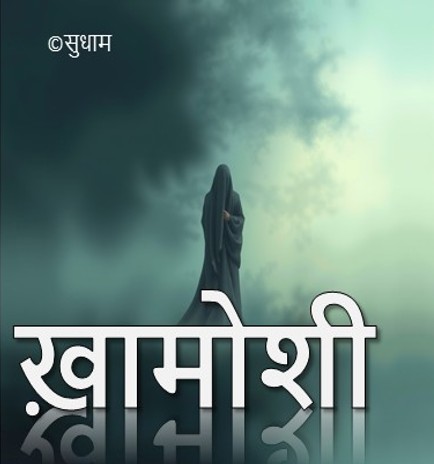
ख़ामोशी के खालीपन में
मैंने ख़ुद को खो दिया
तेरे इश्क़ के पागलपन में
अपनी हस्ती को ही डुबो दिया
तेरी यादों की बेइन्तहाई में
दिन और रैन की सुद को छोड़ दिया
बिछोड़े की इस तन्हाई में
मैंने अपनों से रिश्ता तोड़ दिया
तेरी बेवफ़ाई की इन बातों में
जाने कैसे ग़म से नाता जोड़ दिया
सजदे किये थे जिस रब की ख़ुदाई में
उसी ख़ुदा ने अपना रुख मोड़ दियाझलक (Jhalak)

देखते देखते पूरा एक साल बीत गया
श्रृष्टि के नियमानुसार फ़िर काल जीत गया
जीवन है, लगी तो रहती ही है आनी जानी
इस ताल को वश में कर पाया नहीं कोई ज्ञानी
समय और संवेदना हृदय की पीड़ा हर नहीं पाते
कुछ रिश्ते किसी भी जतन भुलाए नहीं भुलाते
साये जो हट जातें हैं बड़ों के कभी सिर से
लाख चाहे किसी के मिल नहीं पाते फ़िर से
जीवन का चक्का तो निरंतर घूमता ही रहता है
हर पल हर दिन एक नई कहानी गढ़ देता है
पात्र बदल जातें हैं कुछ, कुछ बदले आतें हैं नज़र
मोह का भी क्या है नया बना लेता है अपना घर
दौड़ती फिरती है ये यादें मगर कुछ बेलगाम सी
बातों और आदतों में ढूँढ लेती हैं झलक उनकी
बीते दिनों के किस्सों से अपना मन भर लेता हूँ
मन हो भारी तो उनको बंद आँखों में भर लेता हूँ



